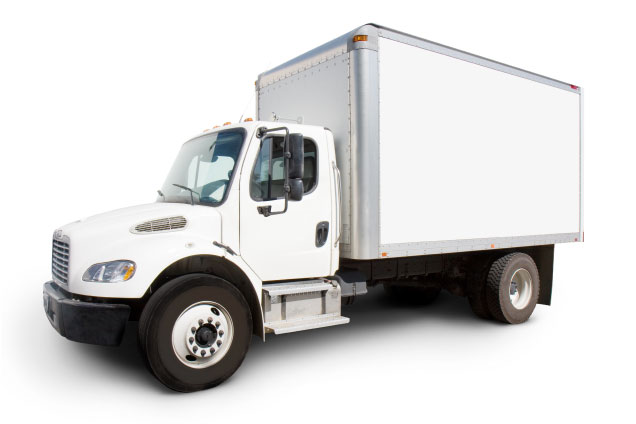Organizing Freezer Storage for Non-Usage
Posted on 26/05/2025
Organizing Freezer Storage for Non-Usage: The Ultimate Guide
Are you wondering how to maintain your freezer when it's not in regular use? Organizing freezer storage for non-usage is vital to prolonging the life of your appliance, preventing mold, and ensuring it's ready for use at any time. Whether you have a spare freezer in your garage, second deep-freeze in your basement, or simply need to make sure your freezer is optimally prepared for a period of non-activity, this comprehensive article offers in-depth advice and practical tips.

Why Proper Freezer Organization Matters During Periods of Non-Usage
Freezers are valuable appliances in any household, used to preserve food, reduce waste, and save money. However, when you're not using yours actively -- maybe after a large event, holiday or change in your storage needs -- how you organize and maintain it can have a profound impact on its longevity and condition.
- Prevents Odors and Mold Growth: Organizing freezer storage for non-usage reduces the risk of lingering odors or mold proliferation.
- Optimizes Appliance Efficiency: An organized, prepared freezer uses energy more efficiently when restarted.
- Protects Your Investment: Freezers are expensive; maintaining them well even during idle periods increases their lifespan.
Common Scenarios Requiring Non-Usage Freezer Organization
- *Vacation homes* not used in off-seasons
- Secondary freezers in homes or businesses
- Temporary moves or home renovations
- Decommissioning freezers during long absences (such as military deployment)
Step-by-Step: How to Organize Freezer Storage for Non-Usage
Organizing your freezer for periods of non-usage requires several steps to ensure it stays clean, energy-efficient, and free from unpleasant surprises. Below is a detailed, actionable checklist to guide you.
1. Remove All Contents and Unplug the Freezer
- Empty Completely: Remove all food, ice packs, and trays. If any food can be reused, move it to your main refrigerator or donate it if appropriate.
- Unplug the Appliance: Always disconnect the power source before any cleaning or organizational task for safety.
Tip: Use insulated coolers to temporarily store perishable items while you tackle cleaning and organizing.
2. Defrost and Deep Clean
- Defrost Thoroughly: Allow the freezer to organize itself naturally as the ice melts. Use towels or a shallow pan to absorb excess water.
- Deep Clean Interior: Mix a solution of baking soda and warm water or use mild soap. Wipe down shells, racks, and drawers to remove food residue.
- Dry Completely: Ensure all moisture is removed with clean, dry towels to avoid mold formation.
Why? Leftover moisture is the primary culprit behind freezer odors and mildew.
3. Organize Accessories and Freezer Parts
- Remove Removable Parts: Take out shelves, baskets, drawers, and dividers for thorough cleaning and drying.
- Store Accessories Separately: Place all removable components in labeled bags or boxes to avoid losing them. Store these nearby if possible.
- Leave Doors Ajar: Keeping the door slightly open ensures air circulation, minimizing odor and mold risk.
Tip: Prop the door open with a rolled towel or special freezer wedge for safety.
4. Deodorize and Protect Against Pests
- Use Deodorizers: Place an open box of baking soda or activated charcoal inside the freezer to absorb any residual scents.
- Inspect and Seal: Check the door gasket for signs of wear and replace if necessary. This stops pests and dust during downtime.
- Physical Barriers: For long-term non-usage, cover the appliance lightly with a breathable cloth to prevent dust without trapping moisture.
5. Consider Freezer Placement and Environment
- Off-the-Ground: If the freezer is in a damp basement or garage, elevate on bricks or pallets to avoid water damage from condensation or flooding.
- Climate Concerns: Extreme cold or hot conditions can affect seals and integrity. Where possible, store in a temperature-stable space.
Remember: The ideal location is dry, well-ventilated, and protected from potential pests.
Long-Term Storage: Specific Strategies for Organizing Freezer Storage During Non-Usage
Label and Inventory Everything Before Shutdown
- Document Inventory: Before you remove items, create a simple digital or handwritten list. List each item's type, date, and intended destination. This helps track what was stored and used.
- Label Removables: Mark all removable shelves, trays, and baskets with tape or marker so you know where they belong upon reassembly.
Prepare for Restart: Easy Reactivation
- Keep Owners Manual Accessible: Place manuals, warranty papers, and any past service information in a nearby waterproof envelope. This ensures quick reference when you reactivate the appliance.
- Check Connections Before Restarting: When you plug it back in, inspect the power cable, outlet, and internal lighting to ensure all are in good working order.
Mold Prevention Methods for Non-Active Freezers
- Ventilation: Air flow deters bacteria and mold. Always leave the door slightly open or use a freezer wedge.
- Periodic Inspection: Even if not in use, set a calendar reminder every few months to check the interior for moisture, odors, or pests.
- Moisture Absorbers: Consider placing silica gel packs or commercial moisture absorbers inside for added protection in humid climates.
Never use chemicals or strong fragrances; these can contaminate the freezer and affect food safety when resumed.
Safety Considerations When Organizing Freezer Storage During Idle Periods
- Child Safety: Ensure the freezer door cannot be closed accidentally when not in use--a propped or wedged door is best practice.
- Electrical Safety: Always unplug your freezer before performing any cleaning or maintenance tasks.
- Hazardous Materials: Remove any batteries or electronic accessories from the freezer during non-usage. Some freezer alarms or digital components run on batteries that may corrode over time if left unattended.
Creative Uses for Idle Freezer Space
Even when a freezer is not used for its intended purpose of food storage, you can still make productive use of its space--just be sure nothing inside could decay or attract pests.
- Storage for Non-Food Goods: Safely store candles, temperature-sensitive medications, or film rolls (with careful packaging).
- Emergency Preparedness: Use the clean, empty appliance to stock non-perishable survival gear, first-aid kits, or bottled water in sealed containers.
- Organizing Seasonal Items: Store infrequently used kitchen gadgets (freezer-safe) for decluttered countertops.
Do NOT store paint, chemicals, or flammable items, as this poses a risk when returning the appliance to food use.
Reactivating Your Freezer After Non-Usage
When it's time to resume using your freezer, proper steps will guarantee functionality and food safety. Follow these best practices:
Step-by-Step Freezer Restart Guide
- Inspect Thoroughly: Check for pests, mold, or signs of moisture.
- Clean Once More: Wipe with a mild soap solution or baking soda and water to remove dust or odors.
- Check Gaskets and Seals: Replace or wipe down the door gasket to ensure a tight seal.
- Plug in and Set Temperature: Let the freezer reach the recommended setting (usually -18?C/0?F) before adding food.
- Restock with Purpose: Inventory and label new additions for maximum organization as you resume routine use.

Frequently Asked Questions: Organizing Freezer Storage for Non-Usage
Should I leave my freezer running when it's empty?
No. If a freezer is not being used for a prolonged period, unplug it to save energy. However, always make sure it is clean, dry, and the door is propped open to prevent issues.
How do I stop a freezer from smelling when not in use?
- Deep clean the interior and all parts thoroughly.
- Leave the door ajar and place a box of baking soda or activated charcoal inside.
- Air out the appliance periodically, and inspect for any causes of odors.
What is the best way to prevent mold in a non-active freezer?
- Ensure no moisture remains inside after cleaning.
- Use moisture absorbers and/or baking soda.
- Allow air circulation by propping the door open.
- Conduct occasional inspections.
Can I store anything else in an unplugged freezer?
Yes, as long as items are non-perishable, dry, and not hazardous. Avoid placing anything that could melt, corrode, or attract pests.
Conclusion: Mastering the Art of Organizing Freezer Storage for Non-Usage
Organizing freezer storage for periods of non-usage is a blend of cleaning, maintenance, and preventative steps. By emptying, defrosting, deep-cleaning, storing removable parts, protecting from mold and pests, and documenting everything, you ensure your freezer remains odor-free, safe, and ready for your next use.
Whether you're storing seasonal appliances or simply securing a backup freezer, following these tips ensures that when you're ready to return your freezer to active duty, it works like new. Invest a little time now, and you'll save both effort and money in the long run!
If you found this guide on organizing freezer storage for non-usage helpful, share it and bookmark for future reference. Good freezer habits pay off every season!





